《审计概念与方法 现行理论与实务指南 英文版·第6版》
| 作者 | (美)道格拉斯·R.卡迈克尔(Douglas R.Carmi 编者 |
|---|---|
| 出版 | 沈阳:东北财经大学出版社 |
| 参考页数 | 656 |
| 出版时间 | 1998(求助前请核对) 目录预览 |
| ISBN号 | 7810444743 — 求助条款 |
| PDF编号 | 810149988(仅供预览,未存储实际文件) |
| 求助格式 | 扫描PDF(若分多册发行,每次仅能受理1册) |
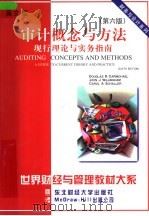
CHAPTER 1 The Audit Function-An Overvie?v1
HISTORY OF THE AUDIT FUNCTION2
Independent Audits Prior to 19002
Twentieth-Century Developments3
AUDITING DEFINED4
Financial Auditing4
Other Types of Audits5
The Need for Audits of Financial Statements5
The Standard Report6
THE AUDIT REPORT6
Generally Accepted Accounting Principles10
Report Title,Address,Signature,and Date11
Departures from the Standard Report12
Generally Accepted Auditing Standards13
THE INDEPENDENT AUDITOR16
Types of CPA Firms16
Internal Structure of a CPA Firm18
OTHER TYPES OF AUDITORS AND AUDITS20
Compliance Audits21
Operational Audits25
Internal Audits25
CHAPTER I ASSIGNMENTS26
CHAPTER 2 Professional Ethics and the Auditing Environment38
PROFESSIONAL STATUS―FRAMEWORK OF THE ENVIRONMENT39
Systematic Theory40
Professional Authority40
Community Sanction40
Regulative Code41
A Culture41
NATURE OF THE ENVIRONMENT41
SELF-REGULATION BY THE PUBLIC ACCOUNTING PROFESSION42
The Organizations Involved43
The Code of Professional Conduct45
Quality Control within CPA Firms54
Mandatory Continuing Professional Education55
Monitoring and Enforcement55
EXTERNAL REGULATION56
The Securities and Exchange Commission57
Legal Liability59
CHAPTER 2 ASSIGNMENTS59
CHAPTER 3 Legal Liability69
THE LEGAL ENVIRONMENT70
CIVIL LIABILITY71
Liability to Clients72
Liability to Third Parties―Common Law73
Liability to Third Parties―Statutory Law78
CRIMINAL LIABILITY81
NOTED LEGAL CASES82
Bar Chris82
U.S. Financial83
Continental Vending83
Yale Express83
National Student Marketing84
1136 Tenants Corporation84
Equity Funding84
Fund of Funds85
Credit Alliance86
Mann Judd Landau86
ESM87
Bily87
SELF-PROTECTION AGAINST LIABILITY88
Crazy Eddie88
TORT REFORM89
FORENSIC ACCOUNTING89
CHAPTER 3 ASSIGNMENTS90
CHAPTER 4 The Elements of Auditing97
EVIDENCE, ASSERTIONS,AND PROCEDURES99
Auditing Procedures99
Evidential Matter and Its Relationship to Procedures101
Financial Statement Assertions and Audit Objectives103
OVERVIEW OF THE AUDIT RISK MODEL106
Types of Tests of Controls107
TYPES OF AUDIT TESTS107
Classification by Purpose of Test107
Types of Substantive Tests108
OVERVIEW OF AN AUDIT OF FINANCLAL STATEMENTS109
WORK PAPERS110
The Function of Work Papers110
The Contents and Requirements of Work Papers111
Legal Aspects of Work Papers113
Mechanics of Work Paper Preparation114
Illustrative Audit Work Papers115
CHAPTER 4 ASSIGNMENTS120
CHAPTER 5 Understanding the Client and General Planning128
CLIENT ACCEPTANCE AND CONTINUANCE129
Quality Control Policies and Procedurse130
Communication with a Predecessor Auditor130
Engagement Letters131
Conferences with Client Personnel131
KNOWLEDGE OF THE BUSINESS133
Organization Structure133
Operations of Legal Structure134
Industry and Economic Conditions136
GENERAL PLANNING AND THE PRELIMINARY AUDIT PLAN137
General Planning Decisions to Be Made137
Knowledge Obtained to Prepare Preliminary Audit Plan137
Procedures in Preparing Preliminary Audit Plan138
AUDIT DECISIONS IN PRELIMINARY PLANNING138
Understanding the Internal Control Structure and the Control Risk Assessment138
Materiality and Audit Risk139
Special Areas of Audit Risk143
Overall Timing of Engagement149
Involvement of Specialists and Others152
Assignment and Scheduling of Audit Staff154
ANALYTICAL PROCEDURES155
Use of Analytical Procedures155
Analytical Procedures in Planning the Audit156
Analytical Procedures as Substantive Tests157
Analytical Procedures in the Overall Review158
Data Used in Analytical Proceduress159
CHAPTER 5 ASSIGNMENTS159
CHAPTER 6 Understanding the Internal Control Structure and Assessing Control Risk176
AUDIT STRATEGY AND THE INTERNAL CONTROL STRUCTURE177
Audit Logic and the Internal Control Structure178
Internal Control Structure Concepts179
Internal Control Structure Objectives180
Detailed Objectives of Internal Control181
COMPONENTS OF THE INTERNAL CONTROL STRUCTURE182
Control Environment182
Monitoring184
Risk Assessment186
Information and Communication186
Control Activities192
An Overview of the Auditor s Consideration198
THE AUDITOR S CONSIDERATION OF THE INTERNAL CONTROL STRUCTURE IN A FINANCIAL STATEMENT AUDIT198
Organizing the Auditor s Consideration203
Understanding the Internal Control Structure205
Documenting the Understanding207
Assessing Control Risk211
Tests of Controls214
Documentation of the Assessment of Control Risk217
Effect on Design of Substantive Tests217
THE FOREIGN CORRUPT PRACTICES ACT218
CHAPTER 6 ASSIGNMENTS219
CHAPTER 7 Planning Tests of Detalls of Transactions and Balances231
DESIGNING AUDIT PROGRAMS―AN INTRODUCTION232
Decisions to Be Made233
Considerations in Deciding on Nature,Timing,and Extent235
Efficiency and Effectiveness of Audit Tests235
DIRECT TESTS OF BALANCES236
Nature of Financial Statement Component and Audit Objectives237
Materiality at the Account Balance Level239
Audit Risk an the Account Balance Level244
Efficiency of Audit Tests251
Relation of Tests of Transaction Classes to Direct Tests of Balances258
TESTS OF TRANSACTION CLASSES258
Types of Tests of Transaction Classes259
Planning the Scope of Tests of Transaction Classes260
DESIGNING AUDIT PROGARMS―ADDITIONAL MATTERS263
Revision of Audit Program as Audit Progresses263
Client Expectations263
Generalized Materials263
Direct Tests of Balances at an Interim Date264
AUDITING ACCOUNTING ESTIMATES265
CHAPTER 7 ASSIGNMENTS265
CHAPTER 8 Audit Sampling276
AN INTRODUCTION TO AUDIT SAMPLING277
Definition and Basic Features of Audit Sampling277
Nonstatistical versus Statistical Audit Sampling279
Representative Selection Methods280
AUDIT SAMPLING FOR TESTS OF TRANSACTION CLASSES283
Planning Samples for Tests of Transaction Classes283
Selection of Samples for Tests of Transaction Classes288
Evaluation of Sample Results of Tests of Transaction Classes288
Statistical Sampling for Tests of Transaction Classes290
Nonstatistical Sampling for Tests of Transaction Classes297
Planning Samples for Direct Tests of Balances300
AUDIT SAMPLING FOR DIRECT TESTS OF BALANCES300
Selection of Samples for Direct Tests of Balances302
Evaluation of Sample Results of Direct Tests of Balances303
Nonstatistical Sampling for Direct Tests of Balances304
Statistical Sampling for Direct Tests of Balances308
Establishing Tolerable Misstatement for Sampling Applications313
Other Statistical Models316
Accounting Estimation versus Audit Hypothesis Testing317
Mean-per-Unit Estimation317
APPENDIX; ESTIMATION SAMPLING―AN AUDIT HYPOTHESIS TESTING APPROACH317
Stratified Mean-Per-Unit Estimation322
Difference Estimation322
Ratio Estimation323
CHAPTER 8 ASSIGNMENTS324
CHAPTER 9 The Effect of Computers on the Audit334
THE RELATION OF COMPUTERS TO AUDITING335
Relation to Phases of the Audit335
Recognizing Reliance on the Computer337
Control Classification in Computerized Systems338
THE INTERNAL CONTROL STRUCTURE AND COMPUTERIZED SYSTEMS338
Auditor Use of the Computer338
Application Controls340
Ceneral Controls343
CONSIDERATION OF THE COMPUTER IN PLANNING THE AUDIT347
Understanding the Client and the Control Environment348
Understanding the Accounting System348
Understanding Control Activities349
Planning Tests of Details of Transactions and Balances350
COMPUTER-ASSISTED AUDIT TECHNIQUES352
Testing Client Programs353
Testing Client Files354
Use of a Microcomputer as an Audit Tool356
A Terminology Note358
OTHER COMPUTER-RELATED CONSIDERATIONS358
Real-Time Processing Systems358
Electronic Data Interchange358
Computer Service Centers359
Database Management Systems359
LANs and Other Networks360
ADVANCED COMPUTER-ASSISTED TECHNIQUES360
Hardware361
APPENDIX:BASIC CONCEPTS OF COMPUTER PROCESSING361
Software362
Data Processing and Storage363
CHAPTER 9 ASSIGNMENTS366
CHAPTER 10 Tests of Transaction Classes and Related Balances378
REVENUE,RECEIVABLES,AND RECEIPTS379
Functions,Documents,Inputs,and Accounting Systems380
Primary Control-Related Features382
Potential Misstatements384
Account Balances and Transactions384
Tests of Transaction Classes for Sales387
Tests of Transaction Classes for Cash Receipts392
Tests of Adjustments to Accounts Receivable393
Special Considerations394
EXPENDITURES,PAYABLES,AND DISBURSEMENTS394
Differences from the Sales Cycle394
Functions,Documents,Inputs,and Accounting Systems396
Primary Control-Related Features400
Account Balances and Transactions400
Potential Misstatements400
Tests of Transaction Classes for Purchases for Inventory401
Tests of Transaction Classes for Cash Disbursements403
Variations for Other Types of Expenditure Transactions406
RELATED DIRECT TESTS OF BALANCES407
Accounts Receivable407
Accounts Payable415
Cash419
CHAPTER 10 ASSIGNMENTS425
CHAPTER 11 Direct Tests of Balances447
INVENTORIES448
Differences from the Sales and Expenditures Cycles449
Assertions,Objectives,and Procedures451
Observation of the Physical Inventory453
Tests of Pricing and Summarization456
Materiality456
Audit Risk457
Additional Considerations458
LONG-TERM ASSETS AND OBLIGATIONS AND OWNERSEQUITY459
Property and Equipment459
Investments and Intangible Assets463
Long-Term Obligations465
Owners Equity467
The Income Statement468
THE INCOME STATEMENT AND INCOME TAXES468
Income Taxes471
CHAPTER 11 ASSIGNMENTS475
CHAPTER 12 Completion of the Audit498
NATURE OF COMPLETION AND REVIEW PROCEDURES500
Date of the Audit Report500
Audit Procedures after Year-End501
SUBSEQUENT EVENTS AND RELATED REVIEW PROCEDURES502
Subsequent Events Review502
Subsequent Events of Audit Interest502
Subsequent Events and the Report Date504
Reissuance of the Audit Report505
REPRESENTATION LETTERS506
Legal Representation Letters506
Client Representation Letters508
REVIEW OF WORK PAPERS AND FINANCIAL STATEMENTS511
Summarization and Evaluation of Audit Results511
Evaluation of Going Concern Status518
Financial Statement Review and Analytical Procedures519
Administrative Completion of Work Papers520
AFTER THE AUDIT521
Subsequent Discovery of Facts522
Maintaining Quality of Audit Practice522
Subsequent Discovery of Omitted Procedures523
CHAPTER 12 ASSIGNMEMTS524
CHAPTER 13 The Auditor s Report537
AUDITOR S REPORTING OBLIGATION539
Departures from a Standard Report540
Financial Statements and Periods Covered542
QUALIFICATIONS, DISCLAIMERS, AND ADVERSE OPINIONS545
Limitations on the Scope of the Audit546
Departures from Generally Accepted Accounting Principles548
EXPLANATORY LANGUAGE ADDED TO THE STANDARD REPORT550
Opinion Based in Part on the Report of Another Auditor551
Departure from a Promulgated Accounting Principle553
Uncertainties554
Going Concern Uncertainties556
Inconsistent Application of Accounting Principles556
Comparative Financial Statements―Updated Reports558
Information outside the Basic Financial Statements558
Emphasis of a Matter559
Old Reporting Terms559
Communicating with Stockholders560
AUDITOR-CLIENT COMMUNICATIONS560
Communicating with the Board of Directors562
Communicating with Audit Committees562
Communicating with Management565
CHAPTER 13 ASSIGNMENTS566
CHAPTER 14 Attestation Services, Unaudited Financial Statements,and Specialized Reporting588
ATTESTATION AND COMPILATION SERVICES590
Types of Engagements591
Attestation Standards592
Compilation or Review of Financial Statements for Nonpublic Companies593
UNAUDITED FINANCLAL STATEMENTS593
Review of Interim Financial Information of a Public Company600
Other Unaudited Financial Statements of Public Companies602
SPECIALIZED REPORTING CIRCUMSTANCES603
Letters for Underwriters604
Special Reports604
Reports on Accompanying Information606
Forecasts and Projections608
Internal Control Structure611
Pro Forma Financial Information613
Compliance Attestation613
CHAPTER 14 ASSIGNMENTS615
CHAPTER 15 Operational Auditing623
FRAMEWORK OF OPERATIONAL AUDITING624
Operational Auditing Defined625
Operational Auditor s Qualifications627
Purpose of the Operational Audit Engagement629
Arrangements for the Operational Audit Engagement630
Methods of Conducting the Operational Audit Engagement631
Form and Content of the Operational Audit Report632
CONDUCT OF AN OPERATIONAL AUDIT634
Preliminary Survey635
Review of Charter and Development of Performance Criteria636
Revicw of Administrative and Related Controls637
Development of Specific Findings and Recommendations637
Preparation and Submission of Operational Audit Report638
EXAMPLES OF OPERATIONAL AUDITS638
Independent CPA638
Governmental Auditor639
Internal Auditor640
CHAPTER 15 ASSIGNMENTS641
Index645
1998《审计概念与方法 现行理论与实务指南 英文版·第6版》由于是年代较久的资料都绝版了,几乎不可能购买到实物。如果大家为了学习确实需要,可向博主求助其电子版PDF文件(由(美)道格拉斯·R.卡迈克尔(Douglas R.Carmi 1998 沈阳:东北财经大学出版社 出版的版本) 。对合法合规的求助,我会当即受理并将下载地址发送给你。
高度相关资料
-
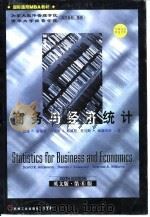
- 商务与经济统计 英文版·第6版
- 1998 北京:机械工业出版社
-

- 云南筵席菜
- 1998 昆明:云南科学技术出版社
-
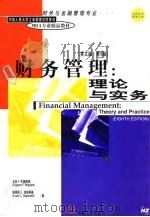
- 财务管理 理论与实务 英文版·第8版
- 1999 北京:机械工业出版社
-
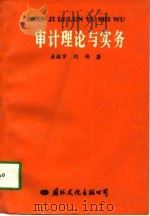
- 审计理论与实务
- 1996 北京:国际文化出版公司
-

- 审计基本理论与实务
- 1994 郑州:河南人民出版社
-
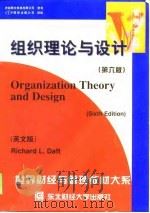
- 组织理论与设计 英文版 第6版
- 1998 沈阳:东北财经大学出版社
-

- 审计与鉴证服务 英文版
- 1998 沈阳:东北财经大学出版社
-
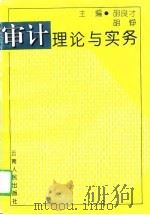
- 审计理论与实务
- 1995 昆明:云南人民出版社
-

- 邮电审计理论与实务
- 1989 北京:经济管理出版社
-

- 现代审计理论与实务
- 1995 北京:经济管理出版社
-

- 现代审计理论与实务
- 1994 郑州:河南人民出版社
-

- 审计理论与实务
- 1996 西安:西安交通大学出版社
-
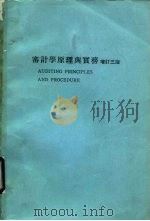
- 审计学原理与实务 增订3版
- 1974 三民书局有限公司
-
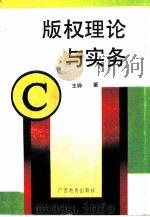
- 版权理论与实务
- 1991 南宁:广西教育出版社
提示:百度云已更名为百度网盘(百度盘),天翼云盘、微盘下载地址……暂未提供。➥ PDF文字可复制化或转WORD
